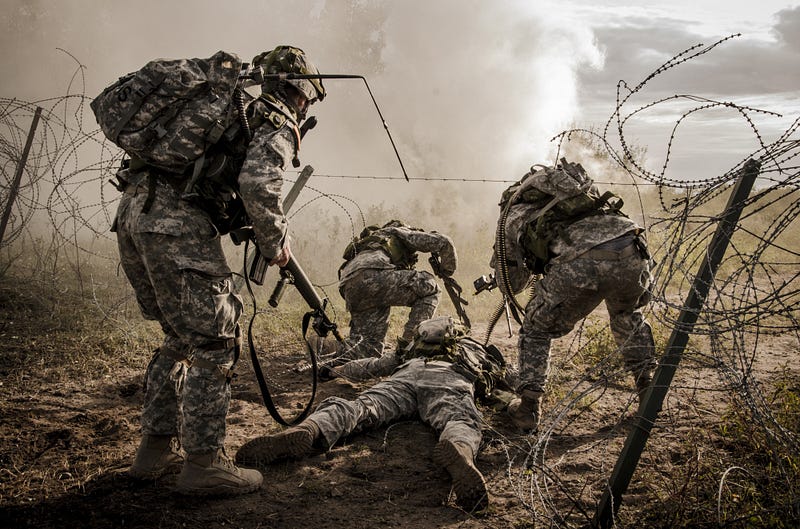Josh Powers
 As a Major, we’re focused on those important (and painful) “KD years,” time well spent as a key leader at the battalion or brigade level. That said, the majority of our time is often spent on higher level staffs, toiling away at a project that no one else seems to care about until it becomes a crisis. Given the time spent in such positions, its interesting that we invest little energy thinking about and preparing for success. After arriving at JBLM in 2012 I was certain I’d get to an S3 job quickly, but instead found myself on the Corps staff for a year where I led several planning efforts as a member of the Future Operations Section, or G35.
As a Major, we’re focused on those important (and painful) “KD years,” time well spent as a key leader at the battalion or brigade level. That said, the majority of our time is often spent on higher level staffs, toiling away at a project that no one else seems to care about until it becomes a crisis. Given the time spent in such positions, its interesting that we invest little energy thinking about and preparing for success. After arriving at JBLM in 2012 I was certain I’d get to an S3 job quickly, but instead found myself on the Corps staff for a year where I led several planning efforts as a member of the Future Operations Section, or G35.
As an OPT leader, your job is to constructively frame the team’s thinking. This implies a significant amount of background work to line up the right people, information, time, and space for creative thinking. Before providing a few lessons learned, let me first describe what an OPT usually looks like.
The Operational Planning Team is an interesting mixing pot of talent, experience, indifference, and confusion. Though the size and scope of an OPT may vary, there are often common organizational attributes. First, members don’t usually work for the OPT leader. Though the leader synchronizes effort around the commander’s vision, OPT members must include the perspective of their direct supervisor or staff primary. Next, the OPT is often not the singular focus of its members. Often, these planners take part in two to three simultaneous planning efforts. Finally, the OPT’s usable time is usually a scarce resource requiring efficient budging and management.
So here are a couple of thoughts on leading planning in this environment. These lessons are somewhat universal towards organizational leadership, but hopefully provide nuanced context relevant to working on a big staff.
Keep a Good Calendar. Seems simple, right? You’d be surprised how difficult it is to keep up with, especially given shifted briefing times due to General Officer availability. Maintain a flexible calendar and update it often. A good OPT leader enables the right people to attend the right sessions, armed with the right information, and only after completing requisite ‘homework.” An effective calendar expresses the input for each session (products and knowledge), the process or plan for each session, and the output.
The Running Estimate. Though effective in a number of formats, I recommend maintaining a tool that can also serve as an emergency briefing tool if called onto the carpet unexpectedly. Another good medium is a simple, one page information paper expressing the OPT’s progress. These simple products can greatly increase shared understanding amongst staff primaries and subordinate commands.
Relationship with the Primary Staff. Believe it or not, your project is not the center of the organization’s universe. Each staff section is likely supporting numerous other planning efforts along with yours. This hectic environment requires good communications with primary staff officers for effective coexistence. Make time to visit primary staff as well as subordinate commands to ensure they understand the direction your team is headed. Lastly, never surprise a primary staff officer in a briefing, especially in front of the boss. If at all possible, provide them a read ahead or the opportunity to attend a prebrief. You certainly should not aim to please every primary staff officer, but your OPT will be more effective if you keep them informed.
Know the Information. Likely the most important take away, it’s your job to know the information. You will be the most informed person judging the problem set holistically. Though an effective OPT leader allows team member expertise to shine in a brief, the boss will ultimately hold you responsible if he senses gaps or a de-synchronized plan. Understand the nuisances of your plan, and maintain the ability to effectively communicate them at the General Officer level.
So how do you succeed? Be the leader your title describes. Take one step back from the problem and provide the cognitive space and construct for your team work.
No comments:
Post a Comment